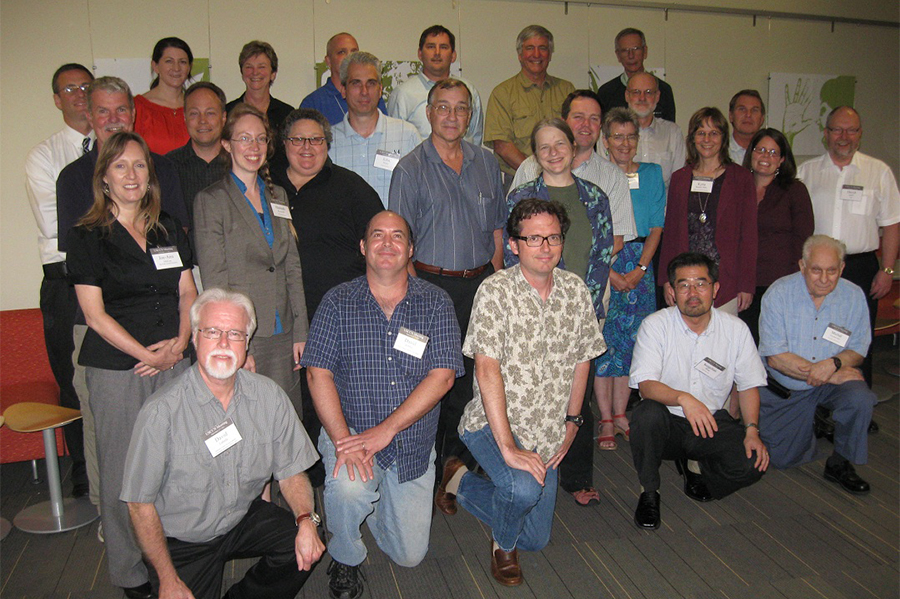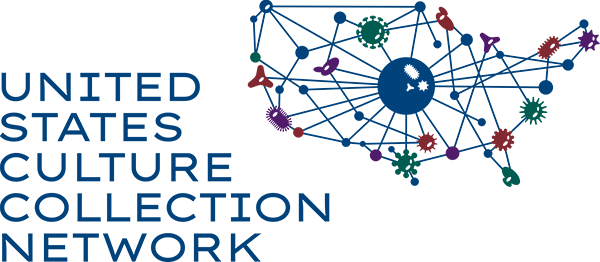
06 Sep USCCN turns 10
Ten years ago, on September 5, 2012, the NSF-supported U.S. Culture Collection Network (USCCN) held its first event at the Fungal Genetics Stock Center (FGSC), then in Kansas City, MO — an outreach session entitled “Biological Resource Centers: Careers as science professionals” to present culture collection careers to local high school and undergraduate students.
Over 50 high school students from six local high schools heard about career opportunities in collections and repositories. Subsequently, three high school students completed a research internship at the FGSC, which led to a publication in the Journal of Genetics in 20131. All three students, Daniel Barchers, Muriel Eaton and Rene Henderson continued their education in biology fields and work now in transplant biology, medical technology and medical data analytics, respectively.
The outreach event was followed by a format launch meeting of the network, on September 6 and 7, where over 20 collection scientists discussed best practices, training, and participated in hands-on demonstrations. For many this was the first time they had interacted with other collection staff.
Kyria Boundy-Mills, UC Davis Phaff Yeast Collection, recalls this event fondly: “Like most culture collection curators, I rarely have an opportunity to visit another culture collection. At the first USCCN meeting in 2012, Kevin McCluskey, then curator of the Fungal Genetic Stock Center, demonstrated how to heat seal glass lyophilization vials under vacuum.”
Since then, USCCN has provided a unique venue for hosts and curators of living and research-focused microbe collections to promote best practices and to engage the larger living collection community broadly, nationally and internationally. “The ability to have in-person conversations with other culture collection curators has built connections that led to new initiatives, funding opportunities, and most importantly, increased enthusiasm and satisfaction in being a steward of resources for the benefit of future generations of researchers,” added Boundy-Mills.
The network held annual meetings covering various themes such as use of specimens from collections in genome sequencing projects, the Nagoya Protocol, outreach programs, data standards, off-site cryopreserved backup services, and how to preserve endangered collections. As a result, USCCN participants co-authored 12 peer-reviewed publications and book chapters. USCCN participants visited U.S. collections, participated to international culture collection conferences, and discussed, compared and exchanged collection management best practices, to cite only some activities and accomplishments.
The Network was recently awarded a five-year grant from the U.S. National Science Foundation (NSF) to administer its second phase, USCCN 2.0. One of the first activity will be the launch of a central registry and searchable collection database to identify and classify the collection resources available worldwide. Data collected through the registry will increase the breadth and utility of living plant microbial collections for multi-disciplinary scientific projects. Anybody working with or managing a culture collection is encouraged to register it on the USCCN website.
1 Wiest A, Barchers D, Eaton M, Henderson R, Schnittker R, McCluskey K. Molecular analysis of intragenic recombination at the tryptophan synthetase locus in Neurospora crassa. Journal of genetics. 2013 Dec;92(3):523-8.
DOI: 10.1007/s12041-013-0305-4
